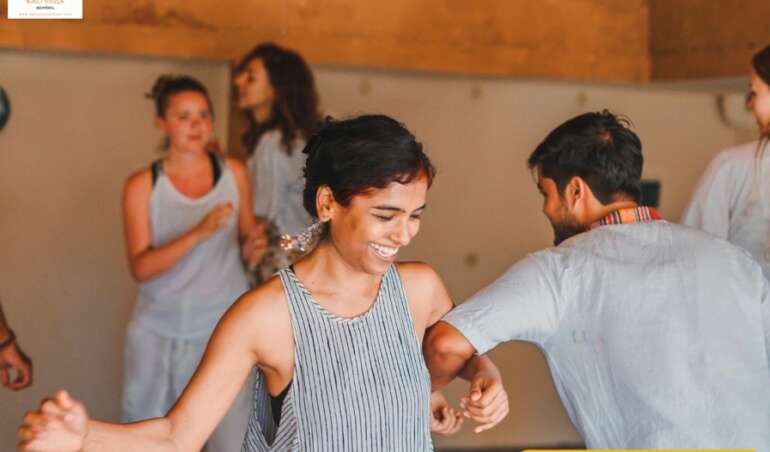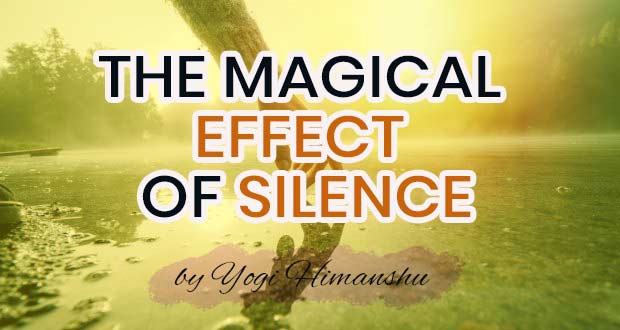
How To Do Padma Parvatasana (Lotus Mountain pose)? Benefits of Yoga Asana
In Sanskrit “Padma” means “Lotus”,”Parvat” means “Mountain”, “Asana” means “Posture”. The English name is “Lotus Mountain pose”.
Position : Sitting
Type : Balancing
Spiritual Awareness : Swadisthan Chakra.
Physical Awareness : Maintaining the balance and coordination with breath.
Dosha Suitability : Best advisable for Vata, whereas Pita and Kapha can also benefit.
Introducery Asanas : Ardha Matsyendrasana, Baddha Konasana, Janu Sirsasana, Vijrasana
Procedure:
- Perform Padmasana.
- Relax the whole body. Exhale, supporting the weight with the hands, slowly lean forward and raise the buttocks off the floor.
- Adjust the position of the hands for comfort and balance.
- Still using the support of the hands, stretch the trunk up vertically, standing on the knees.
- Balance gradually by lifting the hands from the floor one at a time.
- Focus the gaze on a fixed point in front to maintain balance.
- When balanced, bring the palms of the hands together in front of the chest in the prayer pose.
- Hold the final position for as long as possible without strain. Breathe normally.
- Slowly exhale and lower the hands and buttocks to the floor and sit in Padmasana.
- Release the legs, change their position and repeat the pose for the same length of time.
Follow-up Asanas:
- Adho Mukha Svanasana
- Supta Padangusthasana
Spotlight Effects: Spine, knees.
Physical Benefits:
- Allows the body to be held steady completely for long periods.
- With the legs as the firm foundation, holds trunk and head like a piller.
- Directs the prana from mooldhara chakra in the perineum to sahasrara chakra in the head heightening the meditation experience.
- Applies pressure to the lower spine and thus relaxes the nervous system slowing the breath, decreasing the muscular tension, and reducing the blood pressure.
- The large blood flow to the legs is thus redirected to the abdominal region.
- Stimulates the digestive.
- Calms the brain.
- Stimulates the pelvis, spine, abdomen, and bladder.
- Stretches the ankles and knees.
- Develops a sense of balance.
Therapeutic Benefits:
- Sciatca
- Traditional texts say that Padmasana destroys all diseases and awakens Kundalini.
- Apart from the benefits of Padmasana, it helps to have improved balance and coordination.
Precautions and Contraindications:
- High blood pressure.
- Ankle injury.
- Knee injury.
- Padmasana is considered to be an intermediate to advanced pose. Do not perform this pose without sufficient prior experience or unless you have the supervision of an experienced teacher.
- Migrane
Our Yoga Courses In Bali-
https://www.baliyogaschool.com/courses/100-hour-yoga-teacher-training-in-bali/
https://www.baliyogaschool.com/courses/200-hour-yoga-teacher-training-in-bali/
https://www.baliyogaschool.com/courses/300-hour-yoga-teacher-training-in-bali/
https://www.baliyogaschool.com/courses/500-hour-yoga-teacher-training-in-bali/
Our Yoga Retreat In Bali-
https://www.baliyogaschool.com/3-days-yoga-retreat-in-bali-indonesia/
https://www.baliyogaschool.com/yoga-retreat-in-bali/
Our Yoga Retreat In India-
https://www.himalayanyogaashram.com/3-days-yoga-retreat-in-rishikesh/
https://www.himalayanyogaashram.com/yoga-retreat-in-rishikesh/
https://www.himalayanyogaashram.com/6-days-yoga-retreat-in-himalayas/
Our Yoga Courses In India-
https://www.himalayanyogaashram.com/100-hour-yoga-teacher-training-in-rishikesh/
https://www.himalayanyogaashram.com/200-hour-vinyasa-flow-yoga-teacher-training-in-rishikesh/
https://www.himalayanyogaashram.com/300-hour-yoga-teacher-training-in-rishikesh/
https://www.himalayanyogaashram.com/500-hour-yoga-teacher-training-in-rishikesh/
https://www.himalayanyogaashram.com/200-hour-yoga-teacher-training-in-goa/
Our Yoga Courses In Thailand-
https://www.himalayanyogaashram.com/100-hours-yoga-teacher-training-in-thailand/
https://www.himalayanyogaashram.com/200-hour-yoga-teacher-training-in-thailand
https://www.himalayanyogaashram.com/300-hour-yoga-teacher-training-thailand/
https://www.himalayanyogaashram.com/500-hour-yoga-teacher-training-in-thailand/
Our Yoga Courses In Germany –
https://www.himalayanyogaashram.com/50-hour-yoga-teacher-training-in-germany/
https://www.himalayanyogaashram.com/100-hour-yoga-teacher-training-in-germany/
https://www.himalayanyogaashram.com/yoga-teacher-training-in-germany/
Our Yoga Course in Costa-rica-
https://www.himalayanyogaashram.com/200-hour-yoga-teacher-training-in-costa-rica/
Our Yoga Course In Cambodia-
https://www.himalayanyogaashram.com/200-hour-yoga-teacher-training-in-cambodia/
Other good articles –
https://www.baliyogaschool.com/benefits-of-sun-bath-and-normal-bath/
https://www.baliyogaschool.com/imbalanced-diet-and-food-fads/
https://www.baliyogaschool.com/naturopathy-a-natural-physcian/
https://www.baliyogaschool.com/naukasana-boat-pose/
https://www.baliyogaschool.com/what-is-shatkarma-write-the-name-of-all-types-of-shatkarma/





